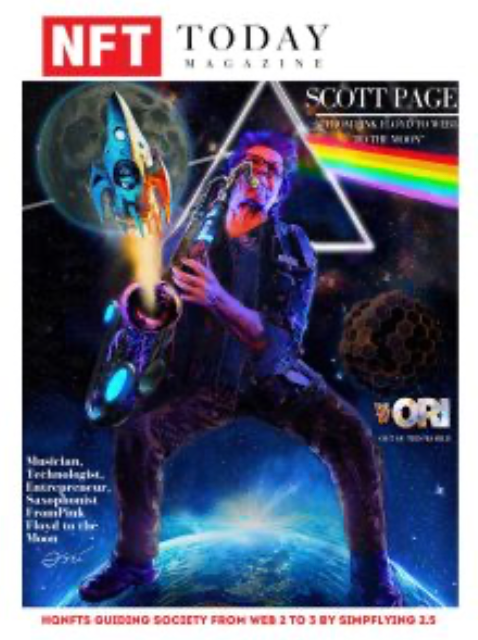Condé Nast and OpenAI Partnership: The Convergence of Legacy Media and AI—Implications for Large Language Models (LLMs)
Staff Writer • 2024-08-25
In a landmark move that signals the evolving relationship between legacy media and artificial intelligence, Condé Nast and OpenAI have entered into a partnership that could reshape the future of content creation and consumption. The deal, which allows OpenAI to utilize Condé Nast’s vast library of content to train its Large Language Models (LLMs), is a testament to the growing influence of AI in the media landscape. However, this collaboration raises critical questions about the quality and integrity of the data that fuels these advanced AI systems. A Strategic Alliance: Condé Nast and OpenAI Join Forces The partnership between Condé Nast and OpenAI is particularly significant given the media giant’s extensive influence in shaping public opinion. Condé Nast's portfolio includes some of the most prestigious publications in the world, such as The New Yorker, Vogue, and Wired. These outlets have long been trusted sources of information for millions of readers globally. The collaboration allows OpenAI to tap into this rich reservoir of content, leveraging it to refine and advance its LLMs. However, this strategic alliance is not without its controversies. The Quality Quandary: Training AI on Potentially Biased Data Ciaran Murray, CEO of Olas, a decentralized media platform, offers a sobering perspective on the implications of this partnership. He argues that the increasing number of deals between traditional media organizations and AI firms could lead to LLMs being trained on information that is "regularly found to be inaccurate." According to Murray, "Since Large Language Models (LLMs) depend on the quality of data they are trained on, relying on biased media sources compromises the utility of the information they produce." This concern highlights the potential for AI systems to perpetuate and even amplify misinformation if they are fed substandard or skewed data. Expert Insight: The Risks of Relying on Legacy Media Sources Murray’s commentary points to a critical flaw in the trust placed in legacy media: the potential for inherent biases within these publications to be ingrained into the AI models trained on their content. While Condé Nast’s publications are known for their high editorial standards, the subjective nature of journalism means that biases—whether conscious or unconscious—are inevitable. The risk is that these biases could become deeply embedded in the AI models, leading to skewed outputs that could misinform or mislead users. Stagnation in AI Progress: The Need for Crowdsourced Quality Control "LLM improvements have stagnated in the last year," Murray notes, emphasizing that this stagnation is partly due to the reliance on "biased media sources." He advocates for training LLMs on information that is subject to market and reputational discipline via the crowd. "These mechanisms are by far the best tools humanity has at its disposal for quality control," Murray asserts. This perspective suggests that while legacy media can provide valuable content, it should not be the sole source of data for training AI models. Instead, a more diversified and crowd-sourced approach to data curation could enhance the accuracy and reliability of LLMs. Reimagining the Economics of Journalism: A Future of Direct Support The implications of this partnership extend beyond the immediate concerns of data quality and bias. As the media and tech industries become increasingly intertwined, there is a pressing need for new economic models that ensure the sustainability of quality journalism. Murray envisions a future where tech giants like OpenAI directly support journalists on a per-article basis, rather than through bundled licensing deals. "This will result in a more effective spend for LLM creators and more revenue to a journalism industry plagued by declining revenues and layoffs," he explains. This model not only addresses the financial struggles of the journalism industry but also promises to create a more equitable ecosystem where high-quality content is rewarded. By aligning the interests of AI developers and journalists, such an approach could lead to a virtuous cycle of content creation, where the quality of information available to train AI models continually improves. Balancing Opportunity and Challenge: Navigating the AI-Media Convergence In conclusion, the partnership between Condé Nast and OpenAI represents both an opportunity and a challenge for the future of AI and media. While it underscores the potential for AI to revolutionize content creation, it also highlights the importance of ensuring that these powerful tools are trained on high-quality, unbiased data. As Murray aptly puts it, "New economic models are coming," and the success of these models will be crucial in determining whether AI can truly enhance the media landscape or if it will merely amplify its flaws. The path forward will require careful consideration of the ethical and economic implications of these partnerships, with a focus on fostering a media environment that values accuracy, diversity, and quality above all else.
See More Posts
A look at how NFTS, Web 3, Gaming, Cryptocurrencies and Blockchain are reshaping businesses across the globe.
@NFT Today Magazine


